One of the controversies surrounding Light-Sport Aircraft has to do with that first word: “light.” Early on, one aircraft importer lobbied to remove the word as it was negatively viewed, he believed. Article updated (5/17/19) with newly released video with Sunrise Aviation owner, Mike Church (see below).
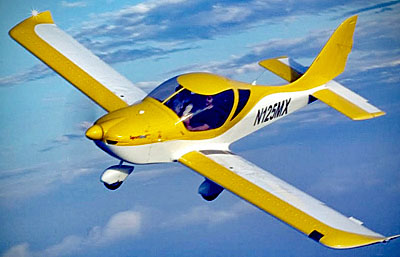 Indeed, outside of the LSA world, many pilots I’ve spoken to believe these aircraft are too lightly built to hold up in flight training, one of the most demanding of all flight activities. “Yes, an experienced pilot may love a LSA,” they may concede, “but these aircraft cannot hold up to regular flight instruction duty.” Enthusiasts may be biased but what would an actual flight school operator say?
Indeed, outside of the LSA world, many pilots I’ve spoken to believe these aircraft are too lightly built to hold up in flight training, one of the most demanding of all flight activities. “Yes, an experienced pilot may love a LSA,” they may concede, “but these aircraft cannot hold up to regular flight instruction duty.” Enthusiasts may be biased but what would an actual flight school operator say?
To get it straight from the horse’s mouth, I inquired of Sunrise Aviation. This substantial flight school has for more than 40 years operated out of the very busy John Wayne airport in Orange County, California. They previously relied on Cessnas for primary flight instruction and hesitantly entered the LSA space with a single Evektor SportStar. How do they feel now, ten years later?
Flight School Owner
Sunrise was founded and is personally supervised by Michael Church, a national flight training authority, honored by the FAA as Safety Counselor of the Year and recognized as a Master Flight Instructor and Master Aerobatic Flight Instructor. Church has logged more than 11,000 hours of flight instruction given. What does he have to say about his experience with LSA?
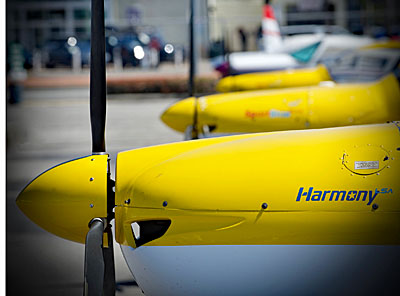
photo by Stephen Trerotola
“It was obvious that LSA was going to potentially revolutionize flight training by reducing expense.” Mike acquired his first Evektor in 2009, only five years after LSA burst on the aviation scene. Sunrise trains to all levels, even including aerobatics, so pilots that start in LSA may transition later.
Mike wondered how Sunrise students would proceed after primary training in LSA and afterward moving to larger aircraft. “SportStar is perfect. It is a great training vehicle and the transition to larger aircraft seems to be very straightforward.”
Mike amplified, “Flight instructors like it because it is really a great training airplane. The best trainers are light, small, maneuverable, frisky. The quicker the airplane makes the student aware of a problem, the quicker the student will recognize a maneuver that didn’t look right, the easier it is to get the student involved with fixing the problem. From the flight instructor’s view, it simply makes the job easier.”
Experience — Then and Now
Any owner can get jazzed about an airplane he or she recently bought. The excitement of a new purchase can overwhelm the pragmatic aspects of longer-term ownership. Here are Mike Church’s thoughts six years ago, in 2013. Later on, we’ll update his perceptions.
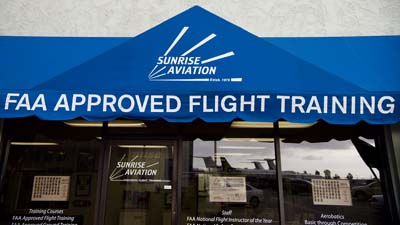
photo by Stephen Trerotola
“Cost of operation has proven to be the single biggest value.” That was very important to this businessman. He specified fuel use was so much lower than what his schools was used to with Cessna 150s and 172s. Since 1978 avgas has only gotten more expensive. Lower fuel cost seems obvious, perhaps, yet endurance of the airframe is one of the problems regular GA pilots note.
“Apparently the low inertia and light weight means they don’t break very much,” Mike observed. In just four years, he reported reaching engine overhaul in two airplanes, logging more than 2,000 hours in each. “We had very few problems.” Way back then, Mike felt, “This is the training airplane to which Sunrise is now committed.”
So he liked Evektor. What about the Rotax engine those models use?
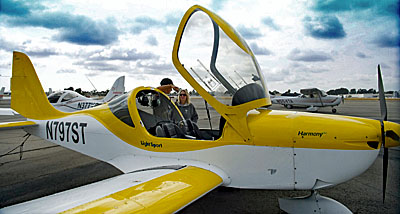
photo by Stephen Trerotola
Mike noted that his earlier aircraft went through four overhauls of their Lycoming engines. He became very confident with them. In 2013, Sunrise was still acquiring time with Rotax and Mike considered the trial ongoing but added, “to date, the Rotax engines have been remarkably trouble free.”
And now? In the six years since, he has become an even bigger advocate of Rotax powerplants. By January of 2019, he reported, “We now have a fleet of five Evektor [both SportStar and Harmony models], and we have accumulated more than 18,000 hours of experience on the airframes and engines.”
“I can say now with great assurance that the Rotax has proved to be a remarkable piece of machinery. Low cost of operation. Low cost of maintenance. I’m a fan!”
Moving from Rotax to other engines means students must learn some new tasks, such as operating mixture control, but he concluded, “This is relatively simple [training] stuff to teach.”
How about Mechanics?
A flight school owner might be expected to be positive about purchase he made. What happens when Sunrise mechanics are asked about their views of Evektor airframes and Rotax powerplants?
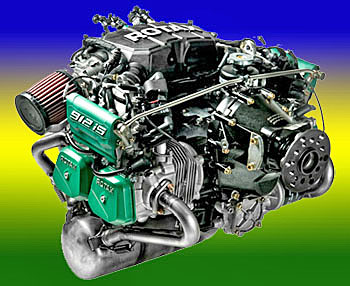
“I’ve never worked with an airplane that demanded so little maintenance. It’s mostly been tires and brakes. We’ve had no major airframe issues and very minor engine issues.” He enthusiastically added, “If you keep on top of them, they’ve been fantastically reliable, more so than any other airplane I’ve worked on.”
How does Matt feel about Rotax? “They’ve also been fantastic. I’ve never worked with a better aircraft engine.” To clarify, Matt added, “We change the spark plugs, the oil, and the filters every 50 hours. Even running avgas we’ve had no problems with leading that some people have reported. In 2,000 hours we replaced one small spring on the sprague clutch; that’s it.”
“We’ve had no lubrication issues, no ignition issues. I had questions at first, but despite hard use by students, the engines have held up exceptionally well. Most squawks that I’ve received have been indicators; it always seems to be the sensor but today even those problems appear to be resolved.”
“The airframes are so light that you don’t see a lot of wear,” Matt continued, and in so saying he turns the “light” problem upside down to become a positive. “They just haven’t been breaking. I have nothing but praise for the whole LSA program.”
What Do Instructors Think?
Instructor don’t own the equipment nor must they repair it. Here’s a sampling of what various Sunrise instructors say.
“SportStar is excellent for training. It has nice control responses.”
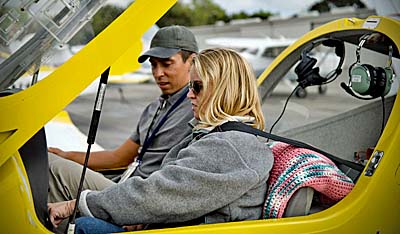
photo by Stephen Trerotola
“My students love flying this [Evektor]. It’s so easy to fly.” They relate the students are comfortable in the airplane.
“Visibility absolutely unrestricted” and their students like that. “The view is amazing.”
“The climb performance that Evektor provides us is incredible.”
Evektor has proven very cost effective. “You only spend about twenty bucks on fuel,” said another CFI, referring to the cost of providing a flight lesson.
When a Master CFI and owner/operator of a Part 141 flight school talks this way after a decade of experience, it would seem to carry more heft than your average Private Pilot. After building 18,000 hours of total time on a fleet of five Evektor LSA over 10 years experience, Sunrise Aviation remains committed to Evektor Light-Sport Aircraft for primary flight training.
Added 5/17/19 — Listen to Sunrise Aviation owner, Mike Church tell you in his own words about his experience with Light-Sport Aircraft as training aircraft in his busy flight school.
Want more? Here is our flight review of the Evektor Harmony shot at DeLand Showcase 2017:


Do the light sport airframes typically hold up as well to hard landings as the common traditional trainers such as Cessna 150s and 172s?
Have we seen light sport airframes get into the 7,000 to 10,000 hour range without trouble?
Not all LSA airframes are the same so it’s pointless to determine if all perform well in a flight school environment. Some are certainly not meant for such duty.
However, I have frequently reported on LSA with thousands of hours and tens of thousands of landings that continue to operate for flight training. A few have gone through more than one engine and continue flying. Therefore it is possible, though the level of maintenance required to assure such long duty no doubt varies widely.
I believe that you have already commented that the Vashon Ranger would be a good flight school plane. Factory built, all metal construction, beefed up landing gear, 6″ wheels, state of art Dynon glass panel, auto pilot, ADS-B, continental engine, 5.5gph, 110 kts., all for less than $100,000.
Hi W.T.: I don’t doubt Ranger would work well in a flight school (and they’d appreciate its lower price). However, it is somewhat weak on payload, which is pretty important to a flight school operation.
I did a few hours in a C175 then I was at the point of soloing but I had to switched to a Cessna Skycatcher 162 because I was going for my LSA license. The 162 is a nice, modern plane. I enjoyed the glass cockpit and having GPS and all that quite a bit but I found it very touchy to land. If I pulled a millimeter too far on the stick it would go ballooning away, this took me quite a number of hours to master. I’ve since been flying a piper cub and it handles hamfisted manuevers much better than the Skycatcher did. Of course it is a tailwheel so requires much better foot work but even there if I’m a bit hamfooted it is ok with it.
Hi Jessee: I have always compared LSA to heavier (and therefore more ponderous) GA airplanes by saying they are a jetski compared to a pontoon boat. Responsiveness is only a challenge until you get used to it — as the tech industry likes to say, “It’s a feature not a bug.”